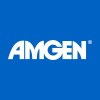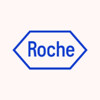
The Effect of the Cosmetic Cream NMBM on Leg Ulcers - a Pilot Study
UlcerVenous Ulcer2 moreUlcers of the lower extremities, caused by chronic venous insufficiency and cellulitis are common in patients older than 65 years and cause a significant morbidity. Natural Matrix Bio polymer Membrane (NMBM) is a novel topical cosmetic cream containing a mix of natural waxes, sugars and lipids. The aim of this study is to test whether of Natural Matrix Bio polymer Membrane (NMBM) is effective as an adjunctive therapy to the treatment of venous stasis and post-erysipelas leg ulcers.

Abrilumab (AMG 181) in Adults With Moderate to Severe Ulcerative Colitis
Ulcerative ColitisThe primary objective of this study is to evaluate the effect of abrilumab on induction of remission in adults with moderate to severe ulcerative colitis after 8 weeks of treatment as assessed by a total Mayo Score ≤ 2 points, with no individual subscore > 1 point.

A Study of the Efficacy and Safety of Etrolizumab Treatment in Maintenance of Disease Remission...
ColitisUlcerativeThis Phase III, randomized, double-blind, parallel-grouped, placebo-controlled, multicenter study will investigate the efficacy and safety of etrolizumab in maintenance of remission in participants with moderately to severely active UC who are naive to TNF inhibitors and refractory to or intolerant of prior immunosuppressant and/or corticosteroid treatment.

Askina Calgitrol Paste Diabetic Foot Ulcers
Diabetic Foot Ulcer (DFU)The purpose of this study is to assess the efficacy of Askina® Calgitrol® Paste in reducing local infection in subjects treated for mildly infected Diabetic Foot Ulcers (DFU) with Askina® Calgitrol® Paste.

A Safety and Effectiveness Study of Golimumab in Japanese Patients With Moderately to Severely Active...
ColitisUlcerativeThe purpose of this study is to evaluate safety and effectiveness of golimumab in Japanese participants with moderately to severely active ulcerative colitis.

Efficacy and Safety Study of EscharEx to Treat (Debride) Hard to Heal Wounds
Hard to Heal WoundsVenous Leg Ulcers2 moreThe main objective of this study is to assess the safety and the efficacy of EscharEx in preparing the wound's bed in patients with hard to heal venous leg ulcers, diabetic lower extremity ulcers and traumatic/post operative wounds. This study will be a multi-center, assessor blinded, randomized, controlled study intended to demonstrate superiority of EscharEx debriding treatment over the Gel Vehicle control treatment in patients with hard to heal wounds. 72 + 24 adults with >50% necrotic/slough/fibrin non-viable tissue on a hard to heal wound (venous leg ulcer, diabetic lower extremity ulcer or traumatic/ post operative wound) between 5 cm2 and 200 cm2 (surface area in stage 1) or 3 cm2 - 150 cm2 (in stage 2), will be enrolled into the study. Patients will undergo a 1 week screening period (2 visits) which will include: record of demographics, medical history and concomitant medications, vital signs, physical examination, clinical laboratory tests, wound photography and assessments and questionnaires (wound status and quality of life). During this period wounds will be treated by standard treatment per the decision of the physician. During this screening period, subjects whose study wound size (surface area) decreases by more than 20 percent will be excluded. Following completion of the screening process, eligible patients will be randomized to either EscharEx or Gel vehicle debridement treatments. In stage 1 (72 patients): Treatment will be performed for up to 10 applications or until complete debridement is achieved, whichever occurs first. In stage 2 (24 patients): Treatment will be performed for up to 8 applications or until complete debridement is achieved, whichever occurs first. Following each application the wound will be washed, photographed and assessed for wound size, removal of nonviable tissue and change in granulation tissue (by digital planimetry software), wound status, and safety parameters. Subsequent to each debridement treatment the wound will be dressed with moist-to-moist saline gauze (except when successive 24h or 48h treatments are performed, in the second stage). Following completion of the debridement treatment period, patients will be treated according to standard procedures and evaluated (wound assessments) once a week until complete wound closure for up to 12 weeks from last application (up to 12 visits). Only during the first stage of the study, for patients who achieved wound closure, additional 3 monthly (3 visits) follow- up visits of wound closure recurrence will be conducted. Quality of life (QoL) will be evaluated at the last follow-up visit - 3 months post wound closure follow-up period. For patients who didn't achieve wound closure only the 3 months FU visit will be conducted. For patients enrolled at the second stage, if wound closure was achieved at the 12 weeks follow-up, additional visit will be performed 2 weeks later to confirm wound closure.

Phase III Study of MLN0002 (300 mg) in the Treatment of Ulcerative Colitis
Ulcerative ColitisThe purpose of this study is to evaluate efficacy, safety and pharmacokinetics of the vedolizumab (MLN0002) induction and maintenance therapy in Japanese participants with moderate or severe ulcerative colitis (UC).

MEDI7183 Phase 2 Study in Japanese Ulcerative Colitis Patients
Ulcerative ColitisThis is a multi-centre, randomised, double-blind, placebo controlled, parallel group, Phase II study to evaluate efficacy and safety of 3 doses of MEDI7183, in Japanese subjects with moderate to severe UC

To Assess Analgesia Provided by Continuous Sciatic Nerve Block in Patients With Hypertensive Leg...
Hypertensive Leg UlcerHypertensive leg ulcer, also called Martorell ulcer, represents 1 to 15% of leg ulcers in hospital. These ulcers are painful, long to heal, and hospitalization is sometimes necessary for analgesia and debridement of necrotic tissue. Strong opioids are often required, and are responsible of many side effects. Martorell ulcer arises predominantly in women over 60 years of age, with history of vascular disease, and therefore with a higher risk of adverse event. Pain is also part of the physiopathology, inducing a vasospasm which increases ulcer extension and ischemia. This is why pain management is one of the main challenge in treatments of these ulcers. Continuous nerve block of lower limbs are often used during per and postoperative orthopaedic surgery. Few adverse events and rare serious adverse events related to local anesthesic are reported (respectively <1% and <1/1000), and few adverse events related to catheter are reported (<1%). Its benefits have been proved on post-operative pain management and reeducation. The aim of this study is to assess analgesia provided by continuous sciatic nerve block, in patients with hypertensive leg ulcer, during hospitalization. Thirty patients will be enrolled on a 3-years period. They will receive a continuous sciatic nerve block with ropivacaïne 0,2%, during 7 days. Pain intensity will be assessed by 4 datas : numerating rating scale (NRS) at rest, during wound care, maximal and mean. These datas will be collected over two 3-days period : the first 3 days of hospitalization, in which pain treatment will be prescribed depending on pain intensity of the patient ; and the first 3 days of ropivacaïne treatment. The main evaluation criteria will be at least a 50% decrease of one of the pain NRS when receiving ropivacaïne. Time to healing, microcirculation evolution measured by Transcutaneous Oxygen Pressure (TcPO2), and quality of life of patients will be collected over a 6 months follow-up.

A Study to Evaluate the Accuracy of a Subset of the Length-109 Probe Set Panel (a Genetic Test)...
ColitisUlcerativeThe purpose of this study is to evaluate the accuracy of a subset of the length-109 probe set panel (a genetic test) in predicting response to golimumab treatment in participants with moderately to severely active ulcerative colitis (UC).
